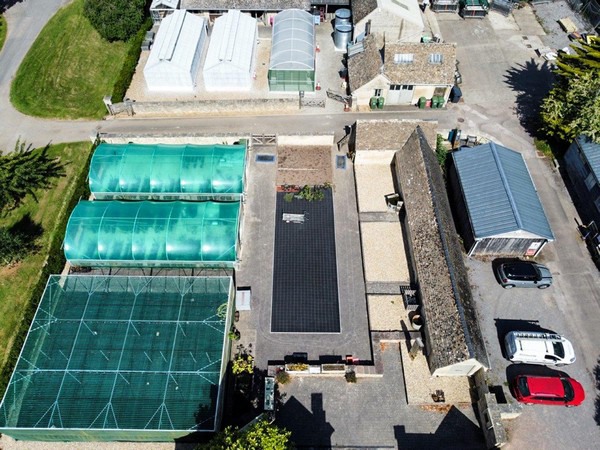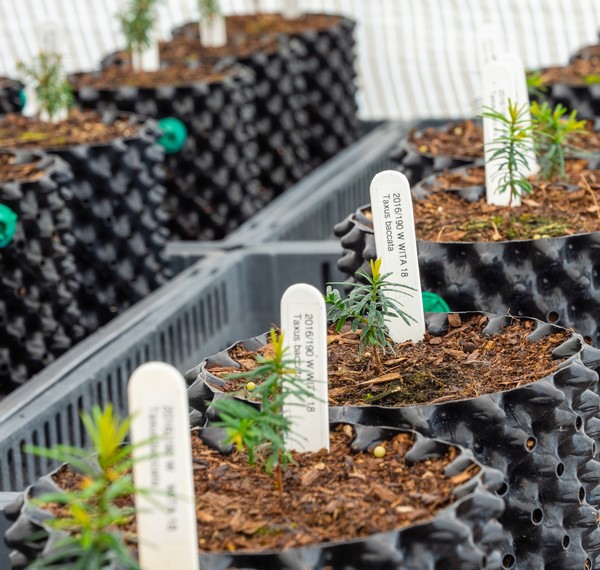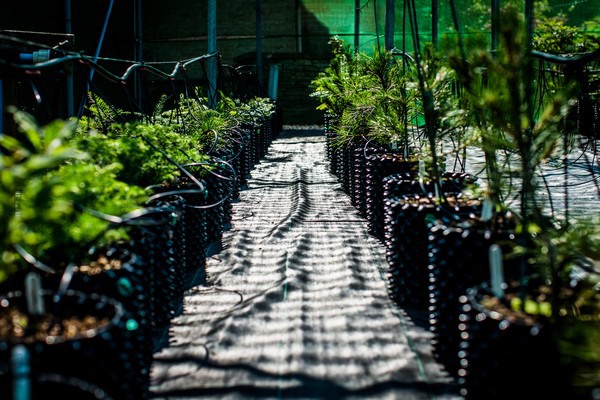To further their sustainability and biosecurity efforts, Westonbirt, The National Arboretum, owned and managed by Forestry England, has recently installed a quarantine house and filtered rainwater system within the arboretum's propagation area.
"We grow trees from all around the world on 600 acres," says Penny Jones, Propagator at Westonbirt Arboretum. "It's a great, historic landscape, and it's planted in a picturesque style." All this partly explains why the arboretum attracts over 500,000 visitors every year.
"We've got three glasshouses and two polytunnels here," she continues to explain. "And recently, we have installed a quarantine house, kindly funded by The Friends of Westonbirt Arboretum charity, along with a state-of-the-art filtered rainwater system now also installed in the propagation area."

A sustainable strategy
Introducing the filtered rainwater system is part of a sustainability strategy that Westonbirt Arboretum has been pursuing for a while. Neil Seegobin, Project Manager based at the arboretum, says: "It's important to point out that we have a net zero emissions target to reach by 2030. On top of that, we want to manage water responsibly and sustainably.
Equally, we use extraordinarily little energy in our glasshouses. We just have some circulating fans and some heated benches, as this is a propagation house, and we need higher humidity for cuttings to thrive. Other than that, we don't heat the greenhouses at all. We believe in greenhouse trees growing up without heat to help them become more resilient."
So, how did this filtered water system come into being?
Neil continues, "We knew about two underground water tanks below the propagation houses that had been unused for years. We were already planning to install a system that could filter the water without using chemicals. Considering we found that we had water tanks already in place, going for that installation was an obvious investment as it also allows us to save water."
Two new above-ground tanks collect around 5,000 liters of water. "The rainwater is pumped into the filtration tank and is then pumped into a holding tank before being passed through a UV filter to ensure that all waterborne pathogens are removed. In this way, we can help protect all our trees in the nursery."
Clean growing
Thanks to preventative measures like this, Westonbirt Arboretum continues to prevent any major pest or pathogen outbreak. "Such a thing has never happened in the nursery," Penny explains. "That does not mean that we don't have some pests that are knocking at our door. The benefit of using filtered water is that we can eradicate the possibility of pythium and phytophthora, which are waterborne diseases. These cause the damping-off of seedlings and failure of young plants."

"Our first glasshouse is a seed house," Penny explains. "There, seeds are sown. Then, the second glasshouse is for vegetative propagation. This has a controlled environment, with an automatic computer system and moving benches. The third house is for young seedlings and cuttings. From there, they move to the tunnels and the shade house. For better controlling pests, we do not use any chemical products. Instead, everything is biologically controlled. We use a sticky bug board to get an indication of what the pest population is like, and then we can tailor our schedule to that and bring in more biological control if necessary."
Increasing biosecurity was also the reason they built a quarantine house.
"We want to protect the nursery and the wider tree collection from the potential risk of pests and diseases," Penny continues. "The quarantine house is a two-bay unit, as we want to isolate any plants that we may be given or select from other botanic gardens and arboreta and any commonly grown cultivars that are available to buy in the trade. Those plants will be isolated until we know that they are safe to mix with the rest of our nursery stock. But also, should we have an outbreak, we have an incinerator next to the quarantine house."

Westonbirt Arboretum's sustainability efforts don't end with water and biological control; the growing medium they use is peat-free.
Westonbirt Arboretum has a crucial role to play in working to protect native and exotic tree species, both by providing a resource for the seed of species threatened with extinction in their native habitats along with researching how best to protect different species against the multitude of threats they now face. The new facilities within the propagation unit help the team both safeguard the collection and continue to plant healthy new trees.
For more information:
Forestry England
Forestryengland.uk/westonbirt/
